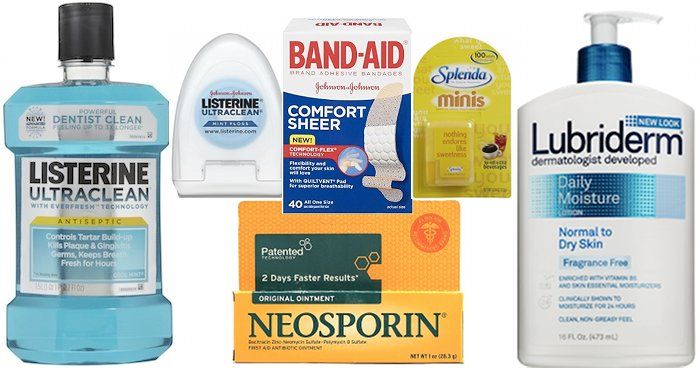This post is part of the HEALTHY ESSENTIALS® 2014 program by Johnson & Johnson Consumer Companies, Inc. and The Motherhood, who sent me a box of products and compensated me for my time. Opinions, experiences and photos shared here are all my own, and I hope you enjoy them.
You may or may not know this already, but November is Diabetes Awareness Month. I have a personal tie to the disease because my mom is dealing with it now, and my grandma also suffered from it for many years. My mom manages her diabetes with daily injections, as did my grandma, before passing away from an unrelated illness.
Johnson & Johnson Family of Consumer Companies is supporting the cause with a special website to share information about diabetes and detail the Healthy Essentials products that could help manage its effects. Here are some tips…

Maintain good oral care habits
Almost half of American adults suffer from various forms of gum disease and don’t even know it! Because diabetes slows the body’s natural healing process, your chance of problems associated with gum disease increases. Visiting your dentist twice a year is the best way to maintain good oral health and treat problems early.
- Brush. Use fluoride toothpaste twice a day to fight cavities.
- Floss. Floss every day to disrupt and remove stubborn plaque. LISTERINE® ULTRACLEAN® Dental Floss stretches, flexes and slides easily between teeth.
- Rinse. Brushing teeth alone misses 75% of your mouth, leaving millions of germs behind. Adding a therapeutic mouthwash to your daily routine is essential to maintaining proper oral care. LISTERINE® ULTRACLEAN® Mouthwash is the only leading mouthwash with an anti-tartar ingredient and new EVERFRESH™ Technology for a dentist clean feeling that lasts up to three times longer vs. brushing alone.
Take care of your skin
According to the American Diabetes Association, diabetes can affect every part of the body, including your skin.
- Keep it clean and dry. Ensuring that skin is always clean and dry helps prevent fungal growth and harmful bacteria from developing into infections. Try a gentle body wash.
- Keep it hydrated. Keeping skin hydrated with a moisturizing body lotion or cream helps relieve the itch associated with dry skin while preventing irritation and cracking. LUBRIDERM® Daily Moisture Fragrance-Free Lotion is a good option – it’s fragrance-free, fortified with Vitamin B5 and skin-essential moisturizers, absorbs in seconds and moisturizes for hours.
- Check and treat every day. Checking skin daily for cracks and treating problems right away helps prevent infections.
Watch out for wounds
According to the American Diabetes Association, diabetics can be at higher risk for wound problems due to potential issues with reduced skin sensation, blood circulation and the body’s natural defense system. Immediate wound care treatment is extremely important for people with diabetes, because an infection can lead to serious health problems.
- Clean it. Wash your hands thoroughly, stop bleeding by applying pressure, and clean cuts and scrapes with mild soap and water. Pat dry with a sterile gauze pad.
- Treat it. Antibiotic ointments, such as NEOSPORIN® First Aid Antibiotic Ointment, can help prevent bacterial infection in minor cuts, scrapes and burns. Follow the package directions and your doctor’s instructions.
- Protect it. Cover the wound with a bandage, like BAND-AID® Brand Adhesive Bandages, making sure it extends a half-inch beyond the wound. Check product label and warning before applying – some covers might not be appropriate for you if you have diabetes. Then select a tape or wrap to comfortably hold your dressing in place without damaging your skin upon removal.
Look for sweet alternatives
For people with diabetes who must control their blood sugar levels through careful monitoring of carbohydrate intake, no-calorie sweeteners such as SPLENDA® No Calorie Sweetener can offer a sweet alternative to full calorie sweeteners, and can be used almost anywhere sugar is used, including cooking and baking.
- On-the-go. People with diabetes can use low- and no-calorie sweeteners to sweeten products such as beverages, yogurt, whole-grain cereals and fruit without adding all the calories and carbohydrate of sugar.
- For managing weight. Currently one in three American adults have pre-diabetes and are at risk for developing type 2 diabetes. One of the most important steps you can take to lower this risk is eating well to maintain a healthy weight. When used in place of sugar, low-and no-calorie sweeteners can help decrease the amount of carbohydrate and calories found in foods and beverages, which may help with weight management and blood glucose control.
Do you or anyone in your family suffer from diabetes?
Visit the HEALTHY ESSENTIALS® website for savings and diabetes resources!